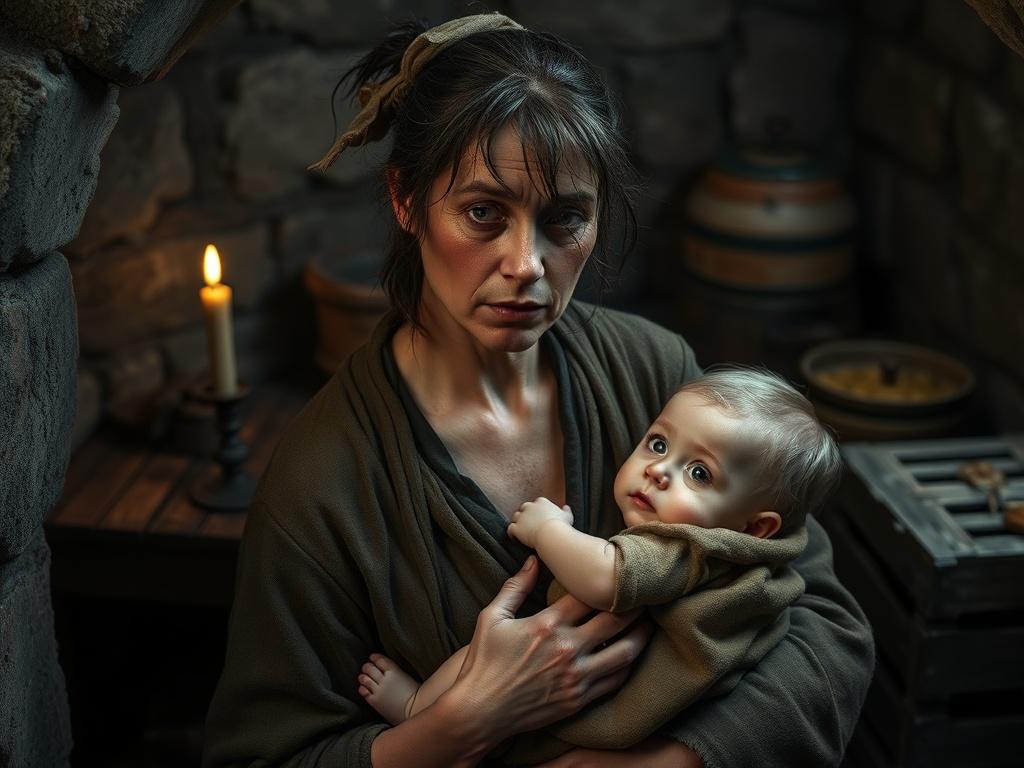
In the shadows of grand castles and imposing fortress walls, a different narrative unfolds—one that often goes unnoticed in the annals of medieval history. The Siege in the Cellars invites you to discover the untold stories of civilians bravely facing the chaos of warfare. While knights and commanders commanded the battlefield, it was the peasants, children, and families who endured the harsh realities of life under siege. Their daily struggles, resilience, and resourcefulness paint a vivid picture of humanity that breathes life into the often-glamorized tales of conquest and glory.
As we delve into the hidden lives of those who lived within the confines of stone walls, we uncover their tales of survival, hope, and despair. These stories provide invaluable insights for historical fiction writers and readers seeking to capture the intimate, human experience amid the brutality of warfare. Join us as we explore how these ordinary individuals transformed the grim experience of siege into powerful stories of triumph over adversity, offering a profound reminder that history is not solely written by the victors but also by the silent voices of those who survived.
Unveiling the hidden lives of civilians: Stories from the depths of medieval sieges
Medieval sieges are often romanticized in tales of brave knights and glittering armor, but the true heart of these events lies within the walls of the besieged towns and cities, where civilians faced unimaginable struggles. While soldiers prepared for battle and strategized their attacks, families huddled together in cramped cellars, battling not only hunger and fear but also the overwhelming uncertainty of survival. Historical accounts often overlook these hidden lives, yet their stories are ripe with bravery and tenacity. From makeshift shelters to communal cooking pots, civilians adopted innovative methods to preserve food, nurture children, and support one another amidst the chaos.
These untold stories unveil a world where resilience triumphs over despair. Peasants, children, and families emerged as unexpected heroes, navigating the complexities of everyday life while their defenders fought above. Women played crucial roles in protecting their homes while men prepared for confrontations. The emotional and physical toll of living under siege shaped a communal identity that does not just resonate within the annals of warfare, but also within the fabric of human resilience. By shining a light on these hidden narratives, we honor the perseverance of those who remained steadfast even when their lives hung in the balance.
Resilience behind fortress walls: The daily survival of peasants and families
During medieval sieges, the lives of civilians often remained overshadowed by the grand narratives of knights and battles. Yet, beneath the imposing fortress walls, peasants and families displayed remarkable resilience. They faced dwindling food supplies, rampant disease, and the constant fear of attack. Resourcefulness became their lifeline; they turned to foraging whatever they could find, from wild herbs to edible grasses. When bread became scarce, they experimented with alternative ingredients, creating rudimentary sustenance to stave off hunger. Daily routines transformed into survival strategies, as women and children took on vital roles in food preservation and protection of the community, ensuring that life within the fortress continued amidst chaos.
Moreover, the psychological toll of prolonged sieges weighed heavily on these civilians. Families created makeshift shelters in cellars or hidden corners of their homes, cultivating a sense of normalcy in the face of desperation. Games and stories filled the air, as children learned to adapt to their new realities, showcasing extraordinary courage. They formed bonds, shared laughter, and offered support even in their darkest hours. This blending of hardship and hope highlights the indomitable spirit of those who lived through these tumultuous times. By illuminating these daily struggles and victories, we not only deepen our understanding of medieval society but also provide a rich tapestry for historical fiction writers keen to explore the human experience during warfare.
Embracing the human side of warfare: Lessons for historical fiction writers and readers
Capturing the essence of the civilian experience during medieval sieges enriches historical fiction and enhances readers' understanding of this tumultuous period. By weaving in the stories of peasants, children, and families, writers provide a multi-dimensional perspective that reflects the stark realities of life behind fortress walls. These narratives evoke empathy and connect readers to the everyday struggles, victories, and defeats of ordinary people, reminding us that while battles rage outside, life continues—albeit under extreme duress. The resilience displayed by these individuals serves as a powerful backdrop to the grander themes of warfare, inviting readers to explore the often-overlooked human cost of conflict.
For aspiring historical fiction writers, embracing the human side of warfare provides a treasure trove of material to develop complex, relatable characters. By shining a light on the emotional and psychological struggles of civilians, authors can breathe life into their narratives, crafting stories that resonate deeply with their audience. Consider delving into the daily rituals of survival, the bonds formed amidst crisis, or the haunting memories of loss and hope. Such elements help to humanize the historical context and invite readers to engage with the past in a meaningful way, ultimately enriching the tapestry of stories that emerge from the war-torn medieval landscape.